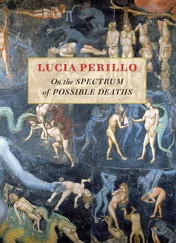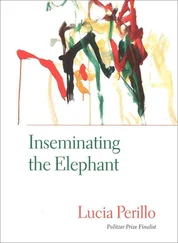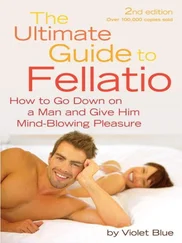I call this syndrome being “eagle-jaded,” eagles having become common enough around here that they don’t necessarily turn our heads anymore. Sometimes Jim and I will float by one perched on a piling, and the bird will outwait us, staring us down, until we eventually check our watches, then turn and paddle away. How valuable am I? it asks, and we answer: Not worth an hour of our time, bub! This is how it is with elusive creatures: we hunt them with fervor, and then when they appear, if they linger, we pronounce them not quite good enough.
I’m thinking about Emerson and Thoreau as I write this: the two craftsmen of our national mental template when it comes to both individualism and nature. “The great man is he who in the midst of the crowd keeps with the independence of solitude,” says Emerson in his famous screed, “Self-reliance,” which gives justification to just about any psychopath who feels he is possessed by genius. Thoreau, famous for his solitary stay at Walden Pond (wherefrom he less-famously frequently returned to his mother’s house for cookies), similarly describes the kind of solitary life that is contingent on good health. To either man, the kind of debt I’m talking about — to someone else’s body — would be unbearable, and it seems downright unpatriotic to live a life of such lopsided physical dependency (in sixth grade I remember learning the fact that Montezuma was carried from place to place so that his feet would never touch the ground; it was understood that his indolence marked his treachery).
But no writer of early America’s vintage fetishizes the body like Walt Whitman, whose body electric is a particularly bad metaphor for someone like me, someone who is barraged continuously by her nerves’ stray volts. If anything is sacred the human body is sacred. . And in man or woman a clean, strong, firm-fibred body, is more beautiful than the most beautiful face . In my copy of Leaves of Grass , the poem that follows is devoted to Whitman’s ideal woman, or more exactly women plural, who stand before him as embodiments of the maternal mystery . “Now I will dismiss myself from impassive women,” he says — the kind of women he wants to rub shoulders with are “tann’d in the face by shining suns and blowing winds”:
Their flesh has the old divine suppleness and strength,
They know how to swim, row, ride, wrestle, shoot, run, strike, retreat, advance, resist, defend themselves,
They are ultimate in their own right — they are calm, clear, well-possessed of themselves.
If Whitman had been the breeding sort, his great-great-granddaughters would now be working on their belly-muscles at the gym.
The paradox of these three writers is how they all stand at a distance from the people they describe — like me, they are observers/imaginers, and though they celebrate humanity, they are never completely a part of it. Even the effusive Whitman admits into his poems no one on whom he was dependent, even though he became disabled by a stroke when he was only in his fifties.
Often I can’t bear to let other people lift me, or even assist me with the simplest tasks — the gestures of reciprocal dependency that we’d make would veer into the territory of the lewd. Think, if you know it, of W. Eugene Smith’s famous photograph of a mother bathing her daughter, deformed by mercury poisoning in Minimata, Japan. The familial bond dignifies the ritual and lends to it a privacy, whose lack — say, were they only nurse and patient — would turn the picture into one that could have been taken by Diane Arbus, interesting but grotesque.
I don’t recognize the sand dollars right away when I see them down through the water. They look like purple crescents, their lower two-thirds buried — at first I mistake them for some kind of vegetation growing on the bottom. They lean from the current, all tilted at exactly the same angle. When it is living, the animal is covered with tiny spines and tube feet, which push tiny particles of food toward the mouth at its center. The velvety surface flashes as the tube feet wiggle when the animal is brought up to light. And the familiar white disk that we collect is just its skeleton.
Because the breezeless heat has sapped me, I want to be dragged into the water as soon as we land, where, in an inverse sort of tide pool exploration, I sit in the shallows waiting for whatever the water brings forth. Green kelp in wide rubbery strands. And a thicker warty strip mottled with a purple and brown camouflage pattern. Small shore crabs scuttle under the vegetation. My crab-crawl is of course not so nimble as theirs, as I hoist myself with my arms and scoot across the sand. This is slow going until Jim grabs my foot like a caveman and drags me out to sea.
Instead of truly swimming I often just float, a metaphor for much of my life, now that my body is a passive thing, almost inert. Such inertia, though, characterizes how a lot of life gets made inside this water: creatures release eggs or sperm, and depend on the current to mix them up. They load the numbers as best they can. Then the rest is luck.
Once Jim and I saw this process happening. At night, at a marine lab in the San Juan Islands, biologists had lowered a waterproof lantern into the edge of the sea. After about an hour, a foot-long pile worm entered the light’s day-glo green aura: slightly phosphorescent, many legged, discharging clouds of sperm as it writhed. And soon after it swam away, the twice-bigger female came along, eggs brewing from her body in a viscous gel. The sight was majestic and awesome; we felt as though we’d seen not one but two dragons. The biologist snatched her up and threw her in a bucket.
But nothing so dramatic will happen today. If I weren’t writing about my unseemly dependency, it would remain a private thing. And I suppose I should have mentioned the actual humongous dragon that is love, but such a beast would never fit in this small boat. Instead, I’ll be its ballast, a soggy Lazarus being ferried home, after Jim lifts me from the water once again and hands me my paddle like a sword.
All morning, from the laboratory of my bed, I’ve been listening to a bird. First a rising warble, then a flat buzzing sound, ending in three notes of the same pitch — maybe slightly descending? I can’t tell. For almost fifty years, I’ve let electric guitars sand down the edges of my brain, making it hard for me to discern the subtleties of birdsong. I need a stupid refrain to glue the tune in place.
The experts would tell me to try hearing the song as a picture, this much I know — I don’t know yet that there exists a whole history of such transcription, ranging from standard musical notation to computer-assisted sonograms. As a beginner at this game, the best I can do is write this in the notebook on the nightstand:

But these scribbles don’t help later, when the pitch and timbre of the sounds have drifted up into the mental rafters. It’s a mystery to me, how the songs can be so present when the lips move over and over them. And yet how quickly they disappear.
When I finally get up and play the tape, the definitive tape made by the experts at Cornell, I hear nothing that matches my diagram. So this knowledge game is a game of loss. Songs imitated incessantly at 5 A.M. are gone by seven, in spite of my inscrutable graphs.
The problem with the definitive tape is that it contains all the birds in North America, with no efficient way to skip ahead to a particular bird that the field guide says might be present in this region. But sometimes I’ll play the tape while I’m doing the dishes — this comes a little later in my pursuit of the knowledge game — and one song will call me to attention from my fog. Rewind the tape, and it’s. . a Hutton’s vireo , though I’m suspicious of this identification because it sounds too esoteric for my woodlot. No, maybe not for my woodlot, too esoteric for me, inside whose brain the song is stored, below the brim of consciousness.
Читать дальше












![Various - Birds and Nature, Vol. 12 No. 5 [December 1902]](/books/745517/various-birds-and-nature-vol-12-no-5-december-thumb.webp)
![Various - Birds and Nature Vol. 11 No. 2 [February 1902]](/books/745533/various-birds-and-nature-vol-11-no-2-february-1-thumb.webp)